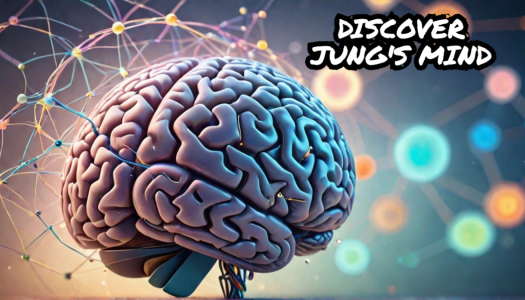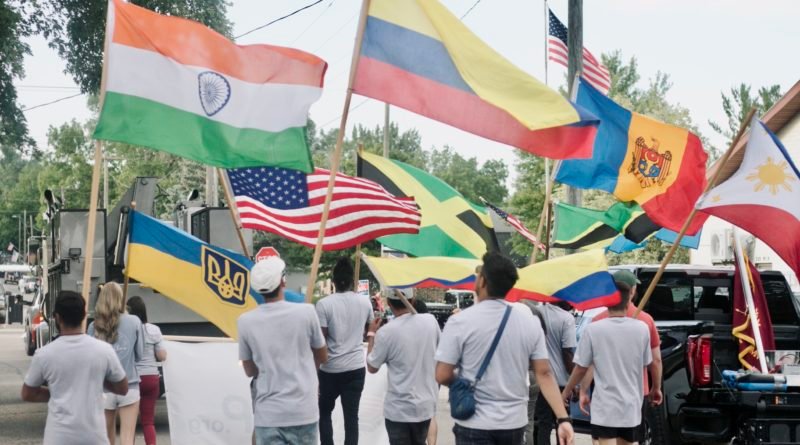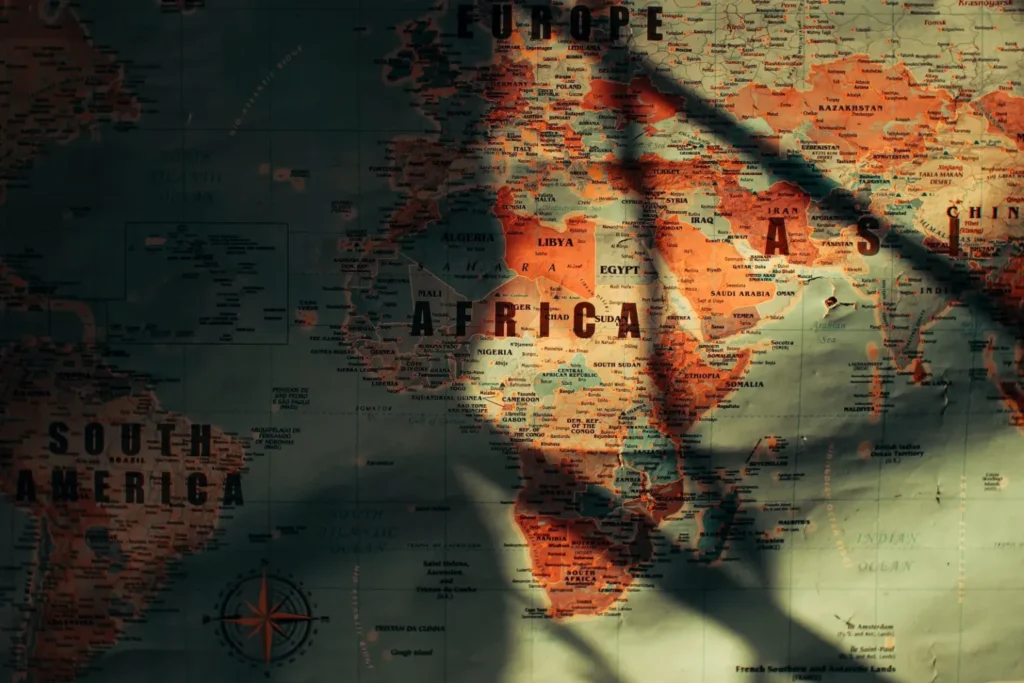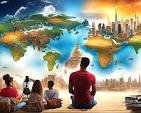In today’s interconnected world, culture travels faster than ever before. Through technology, travel, education, and social media, people across continents share music, fashion, language, and values — creating a beautiful mix of diversity and unity.
This process, known as cultural exchange, is not just about learning from each other — it’s about understanding humanity on a deeper level. It builds bridges between nations, promotes peace, and fuels creativity in ways the world has never seen before.

🎭 What Is Cultural Exchange?
Cultural exchange means the sharing of ideas, customs, arts, and lifestyles between different countries and communities. It happens when people interact through travel, education, media, or online platforms — allowing traditions to blend and evolve.
“Culture is humanity’s language — and exchange is how the world listens.”
Cultural exchange helps us appreciate diversity, reduce stereotypes, and create a sense of global belonging. From Japanese anime in America to K-pop in Europe, from Hollywood movies in Africa to Indian yoga in Brazil — culture is truly universal.
🌍 1. The Power of Globalization in Culture
Globalization has connected the world like never before. Economic, social, and digital integration has made it easier for cultural ideas to cross borders.
Today, a teenager in Pakistan might watch a Spanish Netflix series, wear sneakers designed in France, and listen to American pop — all within a single day.
🔹 Positive Impacts:
- Promotes mutual understanding and tolerance
- Encourages creativity and innovation
- Creates new industries in art, music, and fashion
- Helps preserve and modernize traditional cultures
🔹 Challenges:
- Risk of cultural homogenization (small cultures getting overshadowed)
- Commercialization of traditions
- Misrepresentation in media
Still, the overall impact of globalization has been largely enriching, giving rise to a more open-minded and creative world.

🎶 2. Music & Entertainment: The Heartbeat of Cultural Exchange
Music and film are among the strongest forces of cultural connection.
- K-Pop from South Korea has influenced millions globally through groups like BTS and Blackpink.
- Hollywood continues to shape global storytelling, while Bollywood brings color, dance, and emotion to world cinema.
- Afrobeat from Nigeria has spread across continents, showing Africa’s growing cultural influence.
Streaming platforms like Spotify, YouTube, and Netflix have erased national boundaries, allowing anyone anywhere to experience global art in real time.
“A song can cross oceans faster than any politician’s words.”
👗 3. Fashion & Lifestyle: Global Trends with Local Roots
Fashion has become a universal cultural language. Designers are now inspired by cross-cultural creativity — blending Western minimalism with Eastern tradition.
🌸 Examples:
- Kimono-inspired dresses appear in Western fashion shows.
- Streetwear from Tokyo influences global youth culture.
- Sustainable fashion draws from indigenous textile traditions.
- Hijab fashion and modest wear have become global movements.
Global fashion trends are now more inclusive and diverse, representing a blend of heritage, innovation, and individuality.
🎓 4. Education & Student Exchange: Learning Beyond Borders
Education plays a vital role in cultural diplomacy. Every year, millions of students study abroad through programs like:
- Erasmus+ (Europe)
- Fulbright (USA)
- Chevening (UK)
- Cultural scholarships in China, Japan, and Turkey
These programs don’t just teach academic skills — they build global friendships and understanding.
Students become cultural ambassadors, bringing new perspectives back home and inspiring collaboration across nations.

📱 5. Social Media: The Digital Bridge of Cultures
Social media has made cultural exchange instant and interactive.
Platforms like TikTok, Instagram, and X (Twitter) are filled with cultural trends — from dance challenges to cooking tutorials, fashion hacks to language memes.
💡 Examples of Global Social Media Trends:
- “Food vlogs” connecting global cuisines
- Language learning influencers breaking communication barriers
- Viral dances that unite people from different countries
- Online art collaborations showcasing multicultural creativity
However, social media also brings challenges like misinformation and cultural appropriation — reminding us that digital respect is as important as cultural curiosity.
🌎 6. Travel & Tourism: The Real-World Exchange
Travel remains the most powerful form of cultural immersion.
When people travel, they experience:
- Local cuisine 🍜
- Traditional art 🎨
- Religious rituals 🕊️
- Community lifestyles 🏘️
Tourism promotes economic growth and cultural appreciation, turning travelers into storytellers and advocates for diversity.
Cultural festivals — like Carnival in Brazil, Diwali in India, or Oktoberfest in Germany — attract millions of visitors who return home with a deeper sense of global identity.
🌐 7. The Role of Media & Technology in Shaping Global Trends
From Hollywood to TikTok, technology amplifies how culture spreads. Artificial intelligence (AI), streaming algorithms, and global broadcasting networks curate cultural trends in real time.
- Netflix Originals showcase stories from Korea, Spain, and India to the world.
- YouTube creators promote local traditions globally.
- AI translators break down language barriers, allowing instant cultural communication.
“Technology is not replacing culture — it’s making it accessible to everyone.”
💬 8. Cultural Exchange for Peace & Diplomacy
Cultural diplomacy — such as art exhibitions, film festivals, and language programs — helps nations build peaceful relations.
When countries share culture, they reduce misunderstanding and conflict. For example:
- Ping-Pong Diplomacy between the US and China in the 1970s helped ease political tensions.
- Expo events and World Cultural Fairs bring nations together in friendship and trade.
Culture speaks the language of the heart — it creates harmony where politics sometimes cannot.
🔮 9. Future of Cultural Exchange: Connected, Creative & Inclusive
The future of cultural exchange will be digital, decentralized, and deeply personal.
- Virtual reality (VR) will allow users to experience different cultures from home.
- AI translation tools will make global communication seamless.
- Youth-led initiatives will focus on sustainability, equality, and cultural preservation.
As the world faces shared challenges like climate change and migration, cultural empathy will be key to solving them together.

🌈 Conclusion: One World, Many Cultures
Cultural exchange and global trends prove that diversity is humanity’s greatest strength.
Every time people share a song, a story, or a smile across borders, they build a world that’s richer, wiser, and more compassionate.
“When we exchange culture, we exchange humanity — and that’s how the world truly grows.”
